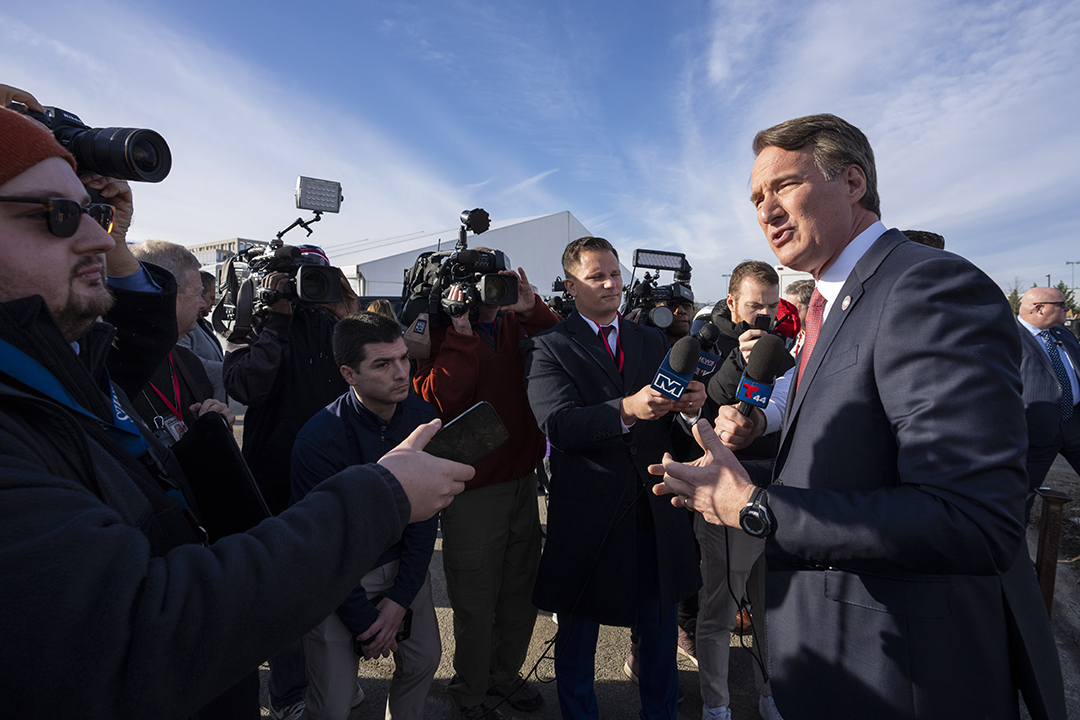RICHMOND, Va. — State lawmakers did not advance legislation this session that aimed to slow rising rent prices, although affordable housing remains a big concern for constituents.
Two proposed bills would have allowed localities to adopt anti-rent gouging provisions, prevent landlords from increasing rent without at least two-month notice, and set an annual allowance between 7-15% for rent increases.
Sen. Jennifer Boysko, D-Fairfax, introduced Senate Bill 366, which is dead after it was defeated in committee.
Del. Nadarius Clark, D-Suffolk, introduced House Bill 721, which was continued to 2025. Committee members raised concerns over potential problems and wanted to see some research, possibly from the Virginia Housing Commission. One member suggested a possible pilot program.
This was the third year that Clark attempted to pass some type of rent stabilization bill. The others were tabled or passed by indefinitely. The fact that the bill was not struck down shows growing support, Clark said.
“It does show that the General Assembly is ready to have conversations,” Clark said. “I’m happy that the chair of that committee and the members of that committee is willing to work with me throughout this year to bring stakeholders together, to bring work groups together.”
Clark represents constituents in the Hampton Roads area where 53.5% of residents spend 30% or more of their income on rent, according to a Harvard Joint Center for Housing Studies report. In the Richmond and Charlottesville areas, 52% of renters spend 30% of their income on rent.
That is on par with, and in some cases greater, than major metropolitan areas around the country, according to the report.
“This year, we’re focused on rent gouging because we see throughout our commonwealth that rent has been going up in certain places 20, 30, 40, 50% and even higher in some places,” Clark said. “We see that these are predatory tactics that some developers and landowners and leasing people are using.”
Clark’s bill advanced from the Counties, Cities and Towns committee on a bipartisan vote. It was then referred to the Courts of Justice Civil subcommittee.
There was testimony in support of and against the bill, which boiled down to renters versus property owners and managers. Virginia constituents have shared stories of how their rent jumped 33% and even higher in certain cases, according to Gustavo Espinosa with the Legal Aid Justice Center.
Espinosa translated for several speakers who offered testimony. One South Richmond renter asked lawmakers for help and to limit rent increases because “our salaries aren’t going up so much.”
“The rent increase has been too much,” said María Lopez, another renter. “We have families and our salary is not enough to pay for everything.”
The rent-gouging protections need to pass and Lopez said it is unjust that landlords can raise rent so much.
People in opposition to the bill testified that it was well intentioned, but would ultimately be ineffective. The state already has a housing supply issue and the bill would exacerbate it, speakers said.
Marla Posey, a member of the Virginia Apartment Management Association, has worked in states with rent control and said the bill could decrease housing supply and quality. She thinks the legislation would harm people instead of help them.
“Here in Virginia, we need policy to support adding new housing opportunities … to be able to house more Virginians, not enacting policy that will halt housing development,” Posey said.
Rent-control also stymies other business development in locations, such as grocery stores, she said.
The bill is not a rent-control measure, Clark said. Allowed rent increases would be evaluated annually. A locality could create a board to also hear arguments for higher increases.
New properties would be exempt from this ordinance for the first 15 years of ownership, Clark said. The original proposal set the exemption at 10 years, but was amended.
If the current system was working, the state would not be short 200,000 affordable units and Richmond rents would not top New York City, Clark said.
“We clearly have a problem and the formula that we’re using now doesn’t work,” Clark said. “This will give localities the power and the option … to enact this ordinance … to help people improve their lives.”
“Real estate” or “construction” groups held the No. 3 spot for campaign donations, when ranked by industry, according to a Virginia Public Access Project analysis. Donations from organizations that fall under that industry totaled $31.6 million from 2022-2023.
Affordable housing was among the top three issues Democratic voters want to see the governor and lawmakers tackle, according to a recent survey from The Wason Center.
There are a number of other housing reform bills in the General Assembly, several with a focus on tenant rights.
Capital News Service is a program of Virginia Commonwealth University’s Robertson School of Media and Culture. Students in the program provide state government coverage for a variety of media outlets in Virginia.




